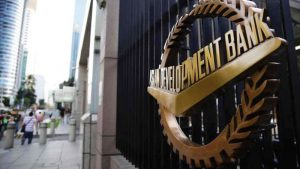THE Asian Development Bank (ADB) said the Philippines must ensure that its recovery is sufficiently green in light of the challenges posed by climate change and declining biodiversity.
The ADB, in a statement, noted that the Philippines is considered one of the top five countries most impacted by climate change, making the sustainability of its post-pandemic recovery measures crucial.
Specifically, the ADB cited issues with Philippine reefs, heavy reliance on marine ecosystems, and the large populations of smallholder fishermen depending on these resources for livelihood and sustenance.
The ADB took note of action taken by the Philippines to address such concerns, including a 2020 moratorium on the development of new coal-fired power plants, and a plan to incentivize private sector investment in renewables such as large-scale geothermal projects.
The ADB also noted the Philippines’ work with the bank on a catalytic financing mechanism under the Green Climate Fund (GCF) to facilitate recovery from the pandemic.
The government’s commitment to fast-tracking its transition to renewable energy from coal is reflected in its target to increase renewables’ share of the energy mix to at least 30% by 2030, the ADB said.
And while some Philippine industries like food processing and construction have specific initiatives, the country still does not have an integrated circular economy plan governing the re-use of minerals, fossil fuels, metals, and biomass.
“While several countries in the region have begun to support a green recovery, more needs to be done. We must encourage additional green stimulus, design carbon pricing schemes, reduce dependence on fossil-fuel intensive power, and attract private sector investors to large-scale renewable energy, sustainable transport, and clean urban projects,” ADB Director General for Southeast Asia Ramesh Subramaniam said in a webinar.
The ADB supports a green-recovery approach for Cambodia, Indonesia, Myanmar, Thailand, and the Philippines.
It estimates that if climate change issues are not addressed, it could cost ASEAN economies an estimated 11% of their combined GDP by 2100.
The ADB identified five focus areas with potential for effecting a green recovery: productive and regenerative agriculture, healthy and productive oceans, sustainable urban development and transport, circular economy models, and renewable and efficient energy.
The ADB said that “if leveraged fully, the five green growth opportunities would require approximately $172 billion in capital investment and can create 30 million jobs in Southeast Asia by 2030.” — Justine Irish D. Tabile
